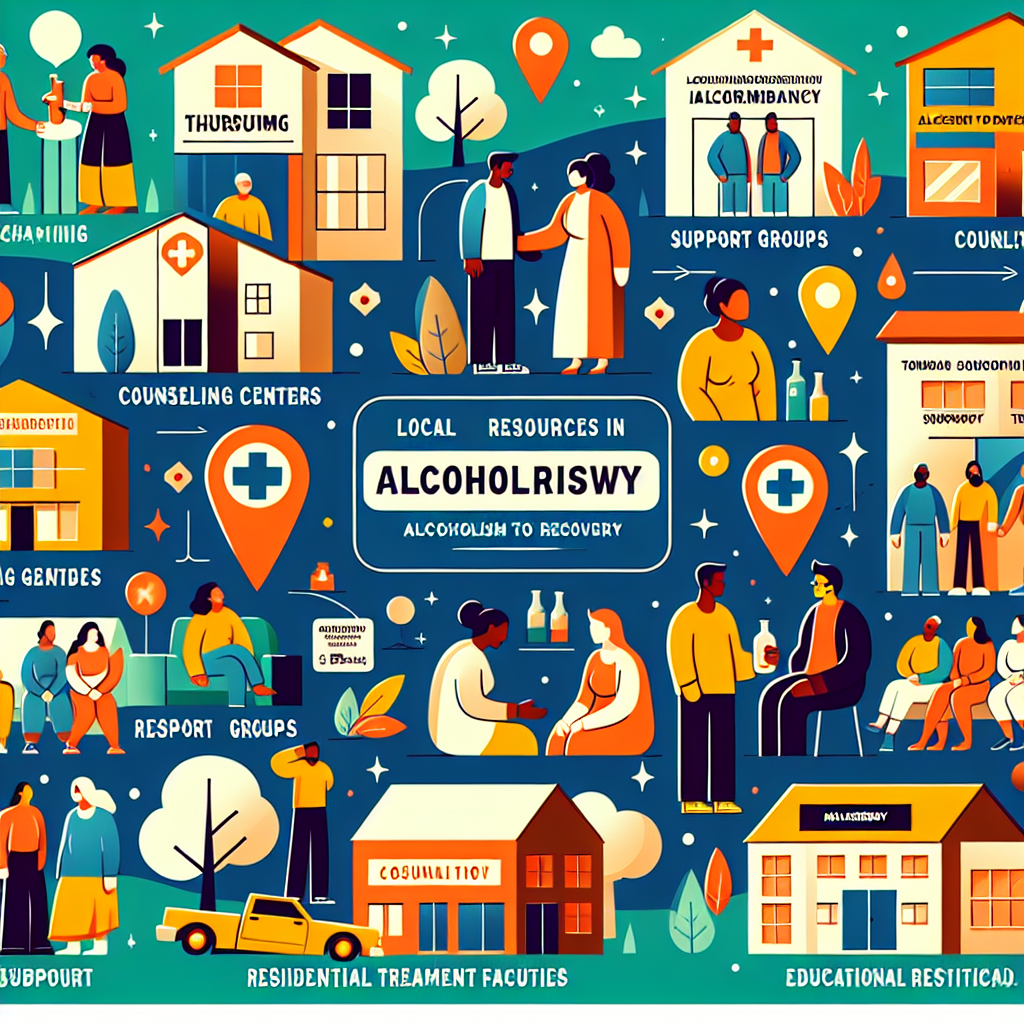-
Table of Contents

“Building Foundations for a Brighter, Sober Tomorrow”
Introduction
Creating a sober living environment post-rehab is a crucial step in the journey towards long-term recovery from addiction. This transitional phase involves establishing a stable, supportive, and substance-free living space that fosters continued sobriety and personal growth. A sober living environment provides individuals with the structure and accountability needed to navigate the challenges of early recovery while gradually reintegrating into everyday life. Key elements of a successful sober living environment include a safe and clean living space, access to support networks such as therapy and peer groups, and the development of healthy routines and coping strategies. By prioritizing these components, individuals can build a strong foundation for sustained recovery and a healthier, more fulfilling future.
Establishing a Support Network for a Sober Living Environment Post-Rehab
Creating a sober living environment post-rehab is a crucial step in maintaining long-term recovery and ensuring a successful transition back into everyday life. One of the most significant aspects of this process is establishing a robust support network. This network serves as a foundation, providing emotional, psychological, and sometimes even physical assistance, which is essential for navigating the challenges that come with maintaining sobriety.
To begin with, family and close friends often form the core of a support network. Their understanding, encouragement, and unconditional love can be incredibly motivating. However, it is important to communicate openly with them about your needs and boundaries. This transparency helps in setting realistic expectations and fosters a supportive atmosphere. Additionally, involving them in your recovery journey can make them more empathetic and better equipped to offer the right kind of support.
Transitioning from family and friends, joining support groups such as Alcoholics Anonymous (AA) or Narcotics Anonymous (NA) can be immensely beneficial. These groups provide a sense of community and belonging, which is vital for someone in recovery. Sharing experiences with others who have faced similar struggles can be both comforting and enlightening. Moreover, these groups often have structured programs that offer guidance and accountability, which are key components in maintaining sobriety.
In addition to support groups, professional counseling or therapy should not be overlooked. Therapists and counselors specializing in addiction recovery can offer personalized strategies and coping mechanisms tailored to your specific needs. They can help you address underlying issues that may have contributed to your addiction, thereby reducing the risk of relapse. Regular sessions can also provide a safe space to express your thoughts and feelings, which is crucial for emotional well-being.
Furthermore, building a network of sober friends can significantly enhance your support system. Engaging in social activities that do not involve alcohol or drugs can help you rediscover joy and fulfillment in a sober lifestyle. Whether it’s joining a sports team, taking up a new hobby, or participating in community events, these activities can provide a sense of purpose and belonging. They also offer opportunities to form new, healthy relationships that reinforce your commitment to sobriety.
Another essential element in establishing a support network is setting up a structured daily routine. Consistency and predictability can provide a sense of stability, which is particularly important in the early stages of recovery. Incorporating activities such as exercise, meditation, and healthy eating into your routine can improve both physical and mental health. Additionally, setting aside time for self-reflection and goal-setting can keep you focused and motivated.
Moreover, leveraging technology can also play a role in creating a supportive environment. There are numerous apps and online platforms designed to assist individuals in recovery. These tools can offer daily reminders, track progress, and even connect you with virtual support groups. Utilizing these resources can provide an added layer of support, especially during times when in-person interactions may not be possible.
In conclusion, establishing a support network is a multifaceted process that involves family, friends, support groups, professional counseling, sober friendships, structured routines, and even technology. Each component plays a unique role in creating a stable and nurturing environment conducive to long-term sobriety. By actively building and maintaining this network, you not only enhance your chances of staying sober but also enrich your life with meaningful connections and a renewed sense of purpose. Remember, the journey to sobriety is not one you have to walk alone; with the right support, it becomes a path filled with hope, resilience, and endless possibilities.
Designing a Daily Routine to Maintain Sobriety After Rehab
Creating a sober living environment post-rehab is a crucial step in maintaining long-term sobriety. One of the most effective ways to ensure this is by designing a daily routine that supports your new lifestyle. Establishing a structured schedule can provide a sense of stability and purpose, which are essential in the early stages of recovery. By incorporating healthy habits and activities into your daily life, you can create a foundation that promotes continued sobriety and personal growth.
To begin with, it is important to prioritize self-care. This includes getting enough sleep, eating nutritious meals, and engaging in regular physical activity. A well-rested body and mind are better equipped to handle the challenges that come with maintaining sobriety. Additionally, a balanced diet can help stabilize your mood and energy levels, making it easier to stay focused and motivated. Exercise, whether it be a morning jog, yoga session, or a visit to the gym, can also play a significant role in reducing stress and improving overall well-being.
Another key aspect of designing a daily routine is setting aside time for personal reflection and mindfulness practices. This can be achieved through activities such as meditation, journaling, or simply spending a few quiet moments each day to check in with yourself. These practices can help you stay grounded and present, allowing you to better manage any cravings or triggers that may arise. Moreover, they can provide an opportunity to celebrate your progress and acknowledge the positive changes you are making in your life.
In addition to self-care and mindfulness, it is essential to establish a support network. This can include attending regular support group meetings, such as Alcoholics Anonymous or Narcotics Anonymous, where you can connect with others who are also on the path to recovery. Sharing your experiences and hearing the stories of others can provide valuable insights and encouragement. Furthermore, maintaining open communication with friends and family members who support your sobriety can help you feel less isolated and more connected to your loved ones.
Work and other responsibilities should also be incorporated into your daily routine. Having a job or engaging in volunteer work can provide a sense of purpose and accomplishment, which are important for maintaining sobriety. It is important to find a balance between work and personal time, ensuring that you do not become overwhelmed or stressed. Setting realistic goals and breaking tasks into manageable steps can help you stay organized and focused.
Leisure activities and hobbies should not be overlooked when designing your daily routine. Engaging in activities that bring you joy and fulfillment can help you build a life that is rich and rewarding without the need for substances. Whether it be painting, playing a musical instrument, gardening, or participating in a sports league, finding activities that you are passionate about can provide a healthy outlet for your energy and creativity.
Lastly, it is important to remain flexible and open to adjusting your routine as needed. Recovery is a dynamic process, and what works for you today may need to be modified in the future. Regularly evaluating your routine and making necessary changes can help you stay on track and continue to grow in your sobriety journey.
In conclusion, creating a sober living environment post-rehab involves designing a daily routine that prioritizes self-care, mindfulness, support, work, and leisure activities. By establishing a structured schedule that supports your new lifestyle, you can build a strong foundation for long-term sobriety and personal growth. Remember, the journey to recovery is ongoing, and with dedication and perseverance, you can achieve a fulfilling and sober life.
Q&A
1. **Question:** What are some key elements to consider when creating a sober living environment post-rehab?
**Answer:** Key elements include establishing a structured daily routine, maintaining a clean and safe living space, having access to support groups or therapy, setting clear house rules regarding substance use, and fostering a supportive community among residents.
2. **Question:** How can one ensure ongoing support in a sober living environment?
**Answer:** Ongoing support can be ensured by regularly attending 12-step meetings or other support groups, engaging in individual or group therapy, having a sponsor or mentor, and building a network of sober friends and family members who encourage and support sobriety.
Conclusion
Creating a sober living environment post-rehab is crucial for maintaining long-term recovery and preventing relapse. It involves establishing a stable, supportive, and substance-free home where individuals can focus on their sobriety. Key elements include fostering a network of supportive relationships, engaging in regular therapy or support groups, maintaining a structured daily routine, and avoiding triggers or high-risk situations. By prioritizing these factors, individuals can create a conducive environment for sustained recovery and personal growth.



